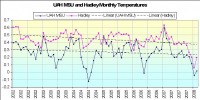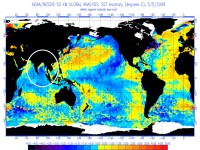By Jeff Poor, Business and Media Institute
Using tragedy to advance an agenda has been a strategy for many global warming activists, and it was just a matter of time before someone found a way to tie the recent Myanmar cyclone to global warming. Former Vice President Al Gore in an interview on NPR’s May 6 “Fresh Air” broadcast did just that. He was interviewed by “Fresh Air” host Terry Gross about the release of his book, “The Assault on Reason,” in paperback.
“And as we’re talking today, Terry, the death count in Myanmar from the cyclone that hit there yesterday has been rising from 15,000 to way on up there to much higher numbers now being speculated,” Gore said. “And last year a catastrophic storm from last fall hit Bangladesh. The year before, the strongest cyclone in more than 50 years hit China - and we’re seeing consequences that scientists have long predicted might be associated with continued global warming.” Gore claimed global warming is forcing ocean temperatures to rise, which is causing storms, including cyclones and hurricanes, to intensify. Read more here.
Icecap Note: Someone needs to let Al know that NOAA’s global 3000 buoys have shown a slight cooling not warming since their deployment in 2003. That temperatures according to satellites (MSU UAH) and the Hadley Center agree with cooling back to at least 2002.
 . See larger image here.
. See larger image here.
Another inconvenient truth is that major devastating storms have been part of the history of the region even back in the Little Ice Age in 1584 when a major cyclone killed 200,000. After a series of killer cyclones in the globally cold 1960s (1963, 22,000; 1965, 57,000 (3 storms), in 1970, during the peak of the mid 20th century cool period, the famous Bhola cyclone killed 300,000-500,000. Another Bangladesh storm in 1991, killed 150,000. See the top ten killer storms in this story today here.
Finally someone needs to show Al the current sea surface temperature analysis chart for the globe where most of the Pacific and Indian Ocean including the waters near Myanmar are cooler than the long term normal.

See full size image here


